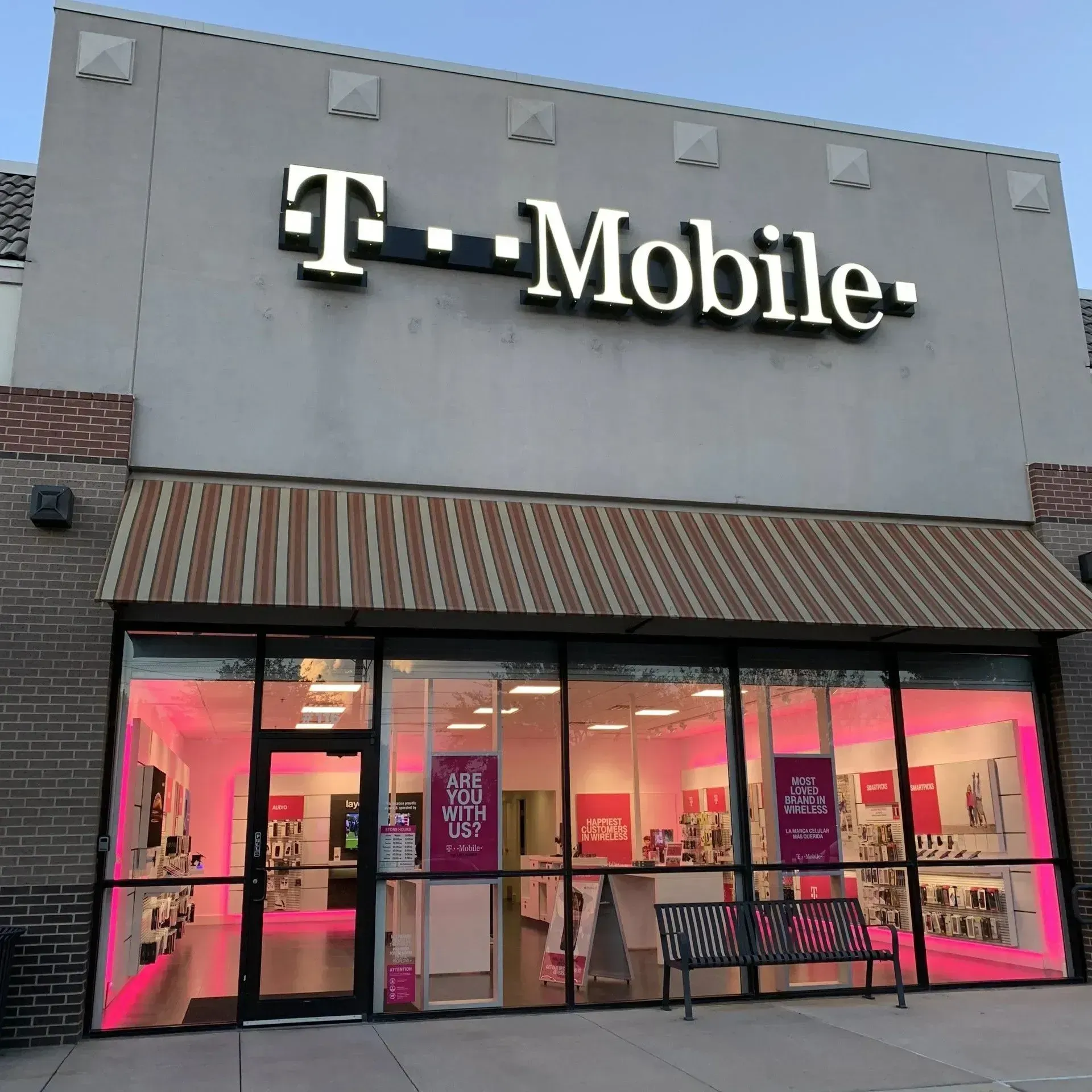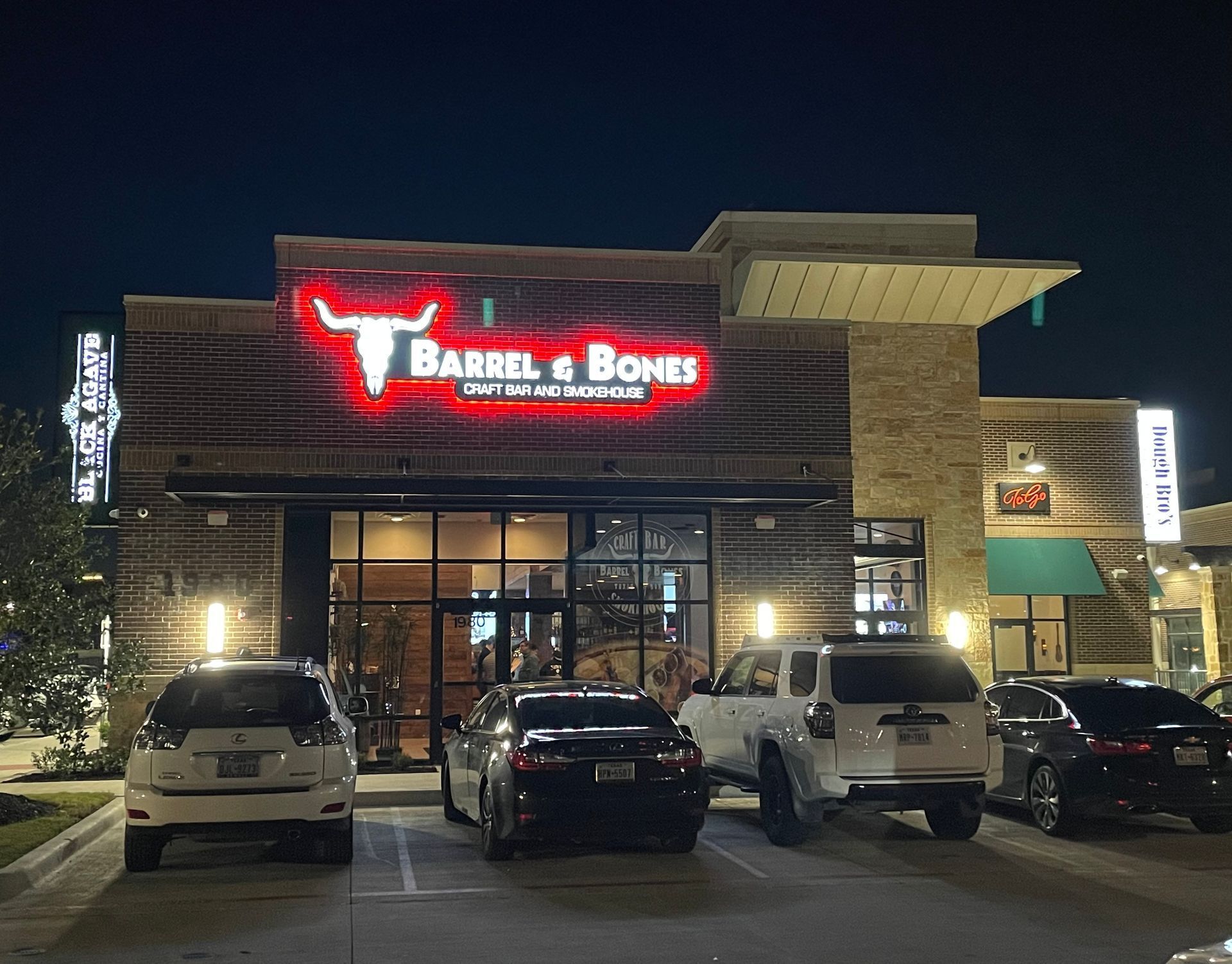Channel Letter Mounting Options: 3 Most Common Methods of Installing Channel Letters
September 12, 2023
September 12, 2023
When it comes to installing channel letters on a building, there are several options available, and the choice of mounting type can be influenced by various factors such as landlord requirements or municipal regulations. Here are explanations of three common sign mounting options: direct mounting, raceway mounting, and backplate mounting.
- Direct Mounting:
Direct mounting refers to attaching the sign directly to the building surface. This method involves fastening the sign elements, such as letters or panels, directly onto the building's facade using screws, bolts, adhesive, or other suitable fasteners. It provides a clean and seamless appearance, as the sign appears to be an integral part of the building. However, it requires drilling into the building surface, which may not be allowed by some landlords or restricted by municipal regulations. - Raceway Mounting:
Raceway mounting involves installing a rectangular metal box or channel called a raceway onto the building surface. The raceway serves as a housing for the electrical components and wiring of illuminated signs. The sign elements, such as letters or panels, are then mounted onto the raceway. This method allows for easy installation and maintenance of electrical connections, as the wiring is contained within the raceway. Raceway-mounted signs can provide a neat appearance and are commonly used for illuminated signs. However, some landlords or municipalities may require the use of raceways to maintain uniformity or for safety reasons. - Backplate Mounting:
Backplate mounting involves affixing the sign elements onto a metal or plastic plate known as a backplate. The backplate is then attached to the building surface using screws or other fasteners. This method provides a sturdy and secure installation, as the weight of the sign is distributed across the backplate. Backplate mounting can be suitable for various sign types, including flat panels, dimensional letters, or even channel letters. It offers flexibility in terms of sign design and allows for easy removal or replacement of the entire sign if needed. However, the appearance may not be as seamless as direct mounting, as there may be visible fasteners or the presence of the backplate itself.
Ultimately, the choice of sign mounting type may be influenced by the requirements of the building owner or landlord, as well as local regulations set by the municipality. It's important to consult with these parties and potentially work with a professional sign installer or designer who can provide guidance on the suitable mounting options based on the specific situation.


June 27, 2025
LED signs, with their vibrant displays and dynamic capabilities, have become a top choice for businesses looking to stand out. One of the most common questions business owners ask is: What are the operational costs of LED signs? This blog post dives into the key factors affecting the operational costs of LED signs for storefront businesses, helping you make an informed investment decision. Why Choose LED Signs for Your Storefront? LED signs are renowned for their bright, customizable displays that can showcase promotions, brand messages, or even animated content. Unlike traditional neon or fluorescent signs, LED signs offer superior energy efficiency and durability. Upfront costs of purchasing and installing an LED sign can vary (typically $4,000 to $10,000 or more depending on size and features), but the ongoing operational costs are also a consideration for business owners. Let’s break down these costs. Key Operational Costs of LED Signs One of the standout benefits of LED signs is their energy efficiency. LED technology consumes significantly less power than other signage options. On average, an LED sign uses about 5 watts per square foot, compared to 30-50 watts for neon or fluorescent signs. For a typical 20-square-foot storefront LED sign running 12 hours a day, you might use approximately 100 watts per hour, or 1.2 kWh daily. Cost Estimate: Assuming an average electricity rate of $0.14 per kWh (based on U.S. commercial rates in 2025), the daily cost is roughly $0.17, or about $5 per month. For larger signs or longer operating hours, costs scale accordingly, but LED signs remain far less expensive to run than older technologies. LED signs are built for durability, with a lifespan of 50,000 to 100,000 hours (approximately 6-12 years at 12 hours daily). Their solid-state design means fewer moving parts and less wear compared to neon or fluorescent signs, which require frequent bulb or gas replacements. Final Thoughts: Are Static LED Signs Worth It? For storefront businesses, LED signs offer a compelling mix of affordability and impact. With operational costs as low as $4-$10 per month for electricity and minimal maintenance, they’re a budget-friendly way to enhance your storefront’s appeal. Their long lifespan and energy efficiency expenses make them a smart investment for small businesses, from cafes to retail shops. Ready to light up your storefront? At SIGMA Sign Co. we specialize in LED signs and can manage all aspects of the sign process including, design, permitting, installation, and maintenance. Contact us today to get started on creating a powerful, energy efficient sign that makes your business stand out!

March 27, 2025
At SIGMA Sign Co., we understand that installing an outdoor sign is a crucial step in promoting your business. However, the permitting process can be complex and time-consuming. With our expertise, our team will simplify this process for you by navigating the permitting process successfully for you. Step 1: Understanding Local Regulations Each city and municipality has unique regulations regarding outdoor signage. These rules may include restrictions on size, height, lighting, and placement. Our team is familiar with local codes and can help you determine the requirements for your area. We'll work with your local zoning or building department to ensure your sign meets all regulations. Step 2: Preparing Detailed Plans Our design experts will create detailed plans that align with your brand vision and meet permitting requirements. These plans typically include: Sign dimensions and design details Materials to be used Proposed installation location Electrical requirements (if applicable) We provide clear visuals such as mockups, blueprints, and site photos to ensure a smooth approval process. Step 3: Submitting Your Permit Application SIGMA Sign Co. can handle the entire permit application process for you. This often requires: Contractor registration A completed permit application form Detailed site and design plans Proof of property ownership or landlord approval Engineering certification (if required) We'll also take care of the permit fee process, which varies depending on your location and project scope. Step 4: Engaging with Local Authorities In some cases, city officials may request adjustments to your design. Our team will stay in close communication with authorities to ensure your project moves forward without delays. If required, we'll attend zoning board or council meetings to advocate for your sign's approval. Step 5: Scheduling Inspections Once your permit is approved, SIGMA Sign Co. will manage the inspection process to ensure your sign complies with safety codes and local regulations. We’ll coordinate inspections during and after installation for a seamless experience. Step 6: Partnering with SIGMA Sign Co. Choosing SIGMA Sign Co. means you’re working with experienced professionals dedicated to delivering compliant, high-quality signage. We take the hassle out of the permitting process, so you can focus on growing your business. Final Thoughts Navigating the permitting process doesn't have to be overwhelming. At SIGMA Sign Co., we specialize in managing all aspects of sign design, permitting, and installation. Contact us today to get started on creating a powerful sign that makes your business stand out!

By 7015546988
•
March 27, 2025
When designing logos, signs, or other graphics for your business, you may hear the term "vector file." But what exactly is it, and why is it important? A vector file is a type of graphic file that uses mathematical equations to create lines, shapes, and curves. Unlike pixel-based images (like JPEG or PNG), vector files are scalable without losing quality. Because vector files are mathematical, machine tool paths can be programed allowing signs to be cut and or bent into dimensional components. Vector art also ensures your logo will stay crisp and sharp whether it's printed on a business card or a billboard. Why Choose Vector Files? Perfect for Scaling: Need your logo on a storefront sign or a vehicle wrap? Vector files allow you to resize your design without it becoming pixelated or blurry. Smaller File Size: Vector files often take up less storage space than high-resolution raster images. Easy to Edit: Vector graphics can be modified quickly, allowing designers to adjust colors, shapes, and text with precision. Common Vector File Formats .SVG (Scalable Vector Graphics) – Ideal for web graphics. .AI (Adobe Illustrator) – A common format for professional design work. .EPS (Encapsulated PostScript) – Often used for large-scale printing. .PDF (Portable Document Format) – Can maintain vector properties when saved correctly. Why Does It Matter for Your Signage? Using vector files ensures your sign is sharp, professional, and scaled to fit your space. Whether you're showcasing your brand on a storefront, vehicle, or banner, vector files are key to achieving amazing results. If you're investing in professional signage, make sure your designs are created in vector format — it's the best way to ensure your brand looks its best at any size!


